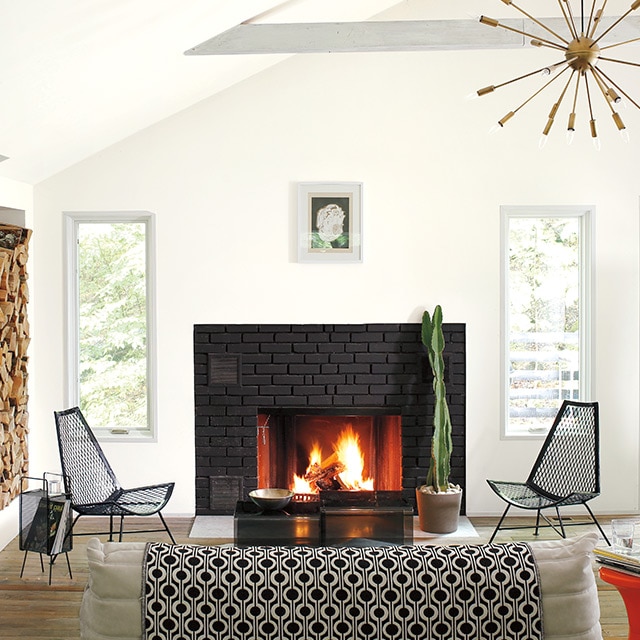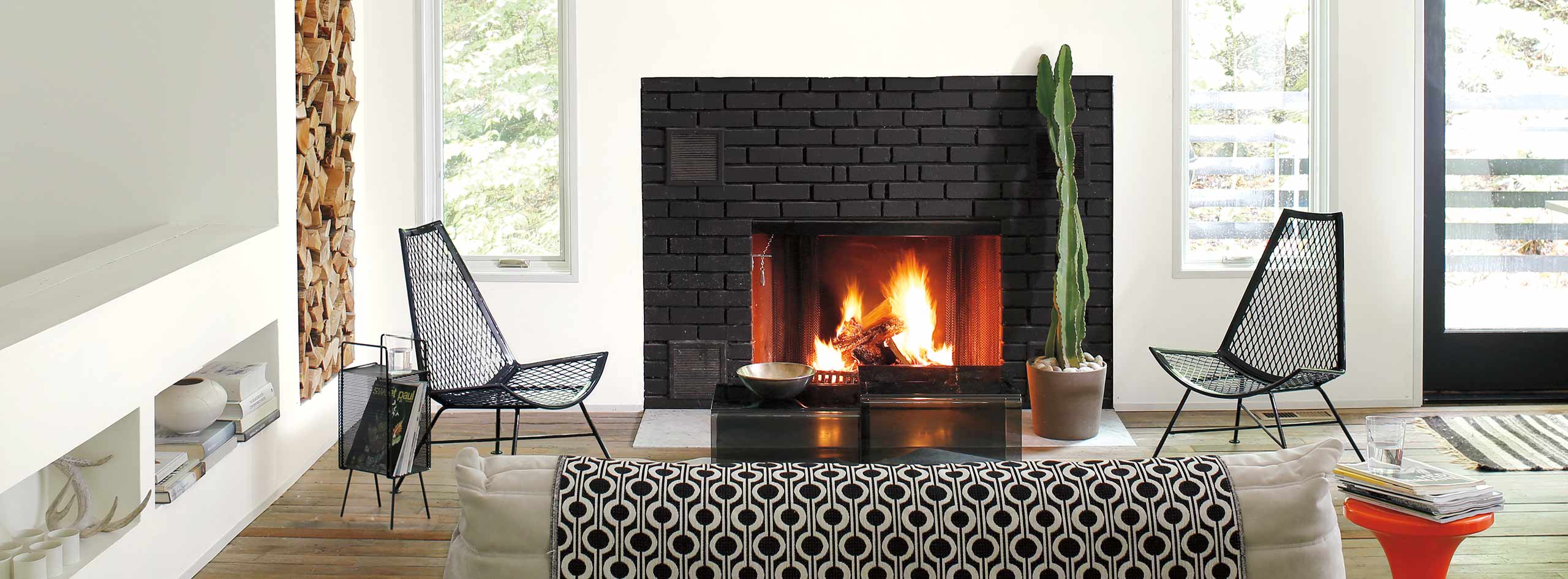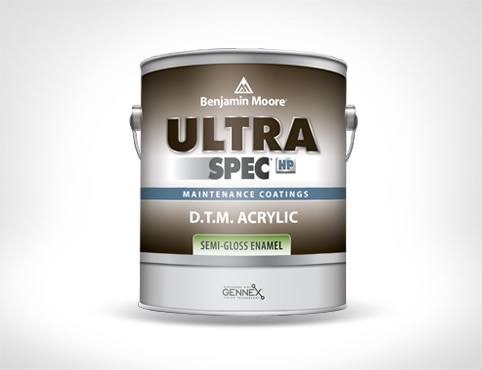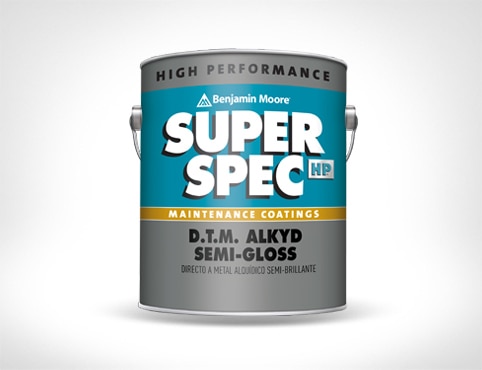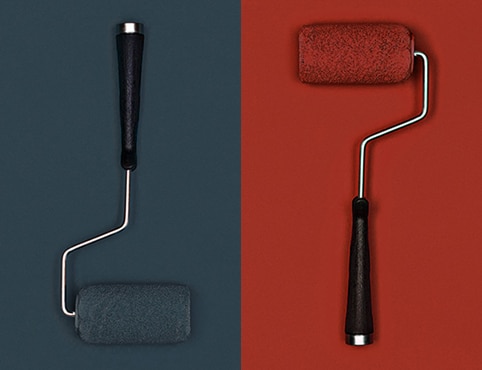Step #1: Assess the Metal
Before you start prepping your metal furniture or even pick your painting products, assess the metal for type and condition.
There are two types of metal typically used for furniture:
- Ferrous metal contains iron. Think heavier furniture made of wrought iron or steel.
- Non-ferrous metal, like aluminum or copper, is more lightweight, and does not contain iron.
Look for the presence of rust or corrosion, which will determine the prep you’ll need prior to painting your metal furniture.
Key Watchout
Not sure what kind of metal your furniture is made from? If your furniture is very light, it is likely aluminum and non-ferrous.If your metal furniture is heavy, or if a magnet attracts to your piece, it likely contains iron and is ferrous.
Step #2: Clean and Prep
When it comes to painting metal furniture, especially how to paint rusted furniture, cleaning is an essential step. It’s especially important to remove any loose rust or oil and grease. Any type of metal should be clean, free of rust, dry, and dull before painting.
- Start by placing a drop cloth around your space.
- To clean ferrous metal furniture, use INSL-X® Heavy Duty Degreaser or a generic degreaser to remove grease. Clean with either a power washer or damp rags and warm water. Follow this with a wire brush and rinse thoroughly with fresh water.
- You can clean non-ferrous metal the same way as ferrous metal, but do not use a wire brush. Using a wire brush can scratch or damage non-ferrous metal.
- If there is existing paint on the metal furniture, you have a few options. You can sand it, use a chemical stripper to remove the paint or just paint over the existing paint if it’s stable.
- If there is peeling paint or rust you want to remove and you opt to sand your metal furniture to smooth the surface, use medium 180- to 220-grit sandpaper and a sanding sponge for non-ferrous metal (aluminum), or coarse 80-grit sandpaper to sand paint off ferrous metal like wrought iron or steel.
- If your metal furniture is lightly rusted, cleaning and sanding it should adequately prepare it for painting.
- If your metal furniture is extremely rusted, you must prime it after cleaning and sanding to seal the surface.
Helpful Tip
You can rent a power washer if you don’t own one. Consult your local Benjamin Moore retailer for equipment rental advice.Step #3: Pick Your Products
Once you’ve picked out your tools and prepped your space, make a plan and get organized on how to tackle the job.
There are two different types of paint products you can use to paint metal furniture: acrylic and alkyd (oil-based) coatings. Each type of product has different benefits, and you should choose your products based on your project goals.
- Acrylic coatings are water-based, generally lower in odor, faster-drying, and longer-lasting with better color and gloss retention.
- Alkyd coatings typically form a more abrasion- and scratch-resistant film, while also inhibiting and preventing rust. Additionally, the alkyd resin will lead to higher gloss levels.
Helpful Tip
Acrylic Paint vs. Alkyd Paint• Want a faster dry time? Go with an acrylic paint.
• If durability is your top priority, go with an alkyd paint.
Step #4: If Rusted, Prime the Metal Furniture
If the metal is clean and free of loose rust, priming isn’t necessary. You can go straight to painting.
However, if there is excessive corrosion after the prep is done and you need to seal and protect the surface, you’ll want to use a primer.
- For priming and painting, we recommend using a paint sprayer or a roller and paintbrush. Use a 4- or 6-inch fine-finish roller if there is detail that is difficult to paint with the roller.
- Apply an even coat of Ultra Spec® HP Acrylic Metal Primer or Super Spec® HP Alkyd Metal Primer to the metal furniture.
- Allow the primer to dry.
Step #5: Paint the Metal Furniture
- Spraying is the most efficient way to paint metal furniture—especially items like patio furniture with mesh detail. Use a paint sprayer, available to rent or buy at your local Benjamin Moore retailer.
- With a paint sprayer or roller, apply an even coat of Ultra Spec® HP D.T.M. Acrylic paint or Super Spec® HP D.T.M. Alkyd paint to your metal furniture.
- Use a fine-finish 4- or 6-inch roller or paintbrush to paint fine details or hard-to-reach areas.
Step #6: Let Dry and Apply a Second Coat
- Check the label or TDS for your product’s recoat time.
- Once you have waited for the appropriate amount of time, apply an even second coat of paint the same way you did the first with a paint sprayer or roller and paintbrush.
- Allow your furniture to cure completely before returning it to everyday use.
Try Another DIY Project!
Ready to tackle your next DIY project? Get it done with ease and find ideas and inspiration in our how-to interior, exterior and DIY sections.As always, visit your local Benjamin Moore retailer for help with all your painting needs.
